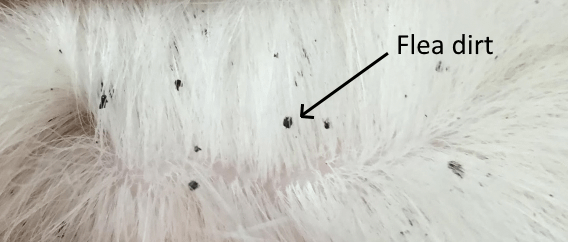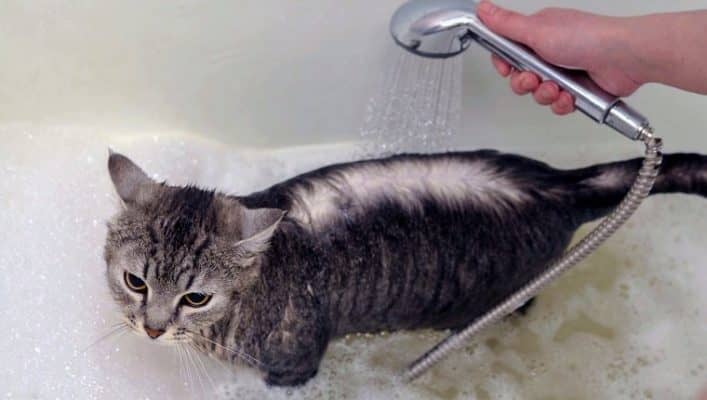The Best Flea Treatment Routine

Signs You Have a Flea Infestation
Before you ever see your first flea, there are warning signs you can spot; if you know what to look for. The most common will be on your pet. Those unmistakable little black specks known as flea dirt.  These are basically the droppings those nasty little creatures are leaving behind after enjoying a nice meal off your beloved pet. Anytime you spot flea dirt it means the fleas have already started building their numbers and you’ll want to act fast. If you are lucky though you may notice a few less obvious signs that may give you a head start on fighting off the dreaded flea army. You may notice your pet is scratching more or seems uncomfortable while resting. You may even notice yourself feeling a bit more itchy, usually around the ankles. If you start to notice these signs it is best to start your war right away.
These are basically the droppings those nasty little creatures are leaving behind after enjoying a nice meal off your beloved pet. Anytime you spot flea dirt it means the fleas have already started building their numbers and you’ll want to act fast. If you are lucky though you may notice a few less obvious signs that may give you a head start on fighting off the dreaded flea army. You may notice your pet is scratching more or seems uncomfortable while resting. You may even notice yourself feeling a bit more itchy, usually around the ankles. If you start to notice these signs it is best to start your war right away.
Our Treatment Plan
Over the years we have tried many different flea treatments. We have come up with a routine that works fast and is safe for your pet.
Start With a Bath
The first step is simple, a nice simple bath. There are plenty of flea shampoos, but we prefer plain and simple dawn dish detergent. It kills fleas on contact, but is gentle on your pets skin and rinses clean. This is an absolute must for our kitty friends. The last thing you want is them licking poison off themselves as they clean their fur. If you infestation is bad you will probably notice the fleas scurrying to dry areas of your pet which will most likely be their face. You will also notice many will die during this process and should give your furry friend a little instant relief.

Use a Flea Comb
After their bath towel dry your pet as much as possible. Then start brushing with a flea comb. You’ll want to have a cup of soapy water to dip and kill the live fleas you pull off of them. Pay special attention to their head, neck and groin area. These are favorite flea hiding spots.
Dinnertime
After a rough afternoon, you’ll want to make sure you pet has their favorite meal. Here you’ll add just the right amount of Capstar to their food. You can also use any generic form of Nitenpyram that is made for pet consumption. About 20 minutes after they eat, you will probably notice your pet itching more than usual. This is a good sign, it means the fleas are aggravated and dying as they bite. I always suggest the bath first to bring down the number of fleas before this step.
Use a Flea Comb a Second Time
You can help your pet remove some of the dead and dying fleas along with any left over eggs by going over them again with the flea comb. This time around you should notice less of them!
Use a Topical Treatment
Capstar is a temporary fix and only kills fleas for up to 24 hours. It is a great tool to bring down the number of fleas on your pet and give them some fast relief, however, you will have to use a more permanent treatment if you want those fleas gone for good. We currently use Revolution which is by prescription only. Most vets will sign off on the prescription for you as long as you pet is up to date on their wellness exam. There are other over the counter topical treatments as well, which include, Frontline, Advantage and Cheristin. Whatever you decide to use, make sure your read the directions carefully and apply it correctly. The medicine needs to be placed directly on the pets skin for it be effective.
Treat Your Home and Your Yard
It is also important to not only treat your pet, but your home and yard as well. Wash and vacuum all pet beds, blankets and climbers, paying special attention to anything with fabric or carpeting. Vacuum your home often and routinely wash your rugs and furniture. Have your yard professionally treated or treat yourself. Keep your yard clean and free of debris, fleas love dark, humid places and hate sunshine. So make your yard as open and sunny as possible.
Remember To Continue Treatment
If you follow these steps you should notice a difference pretty quickly. However, since flea eggs can take 2 weeks to hatch, you may have to wait through a couple cycles before you are no longer seeing any evidence of their presence. Make sure you stay diligent! Continue to treat all your pets and keep up with your routine of cleaning, washing and vacuuming. The best way to stay flea free is to prevent them in the first place.


